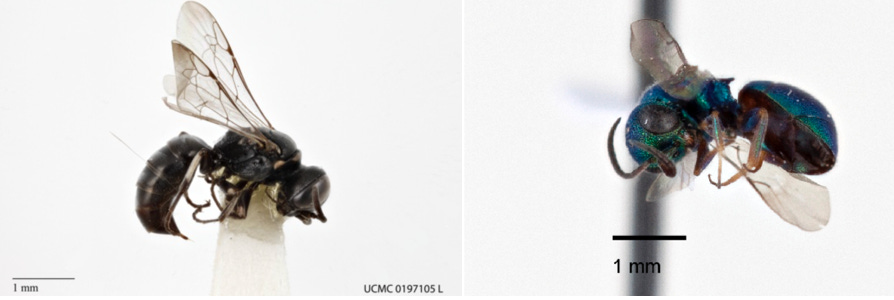A little change of pace. Last week over Thanksgiving, we were fortunate to spend some time down near Palm Springs. Not surprisingly it was a tad bit warmer (peak of 85°) with nary a cloud in sight than in my fair city, which was blessed with about two inches of precipitation.
One of the highlights of our desert sojourn was encountering an old friend and a favorite southwest plant—desert trumpet (Eriogonum inflatum). Lean and sculptural, desert trumpets begin life when spring rains trigger the basal growth of shiny, dark green leaves, out of which extends a narrow stalk topped by a bulbous inflation (hence the specific epithet and common name). The inflated stems provide structural support for the plant, and tall desert trumpets may have several levels, giving the impression that someone has stacked the plants atop each other.

I first encountered desert trumpets when we lived in Moab. As a budding naturalist—as opposed to my initial, narrow geological worldview—I liked that they were very easy to identify. Later, when I was working on my field guide to plants and animals of SE Utah, I learned that one cannot always trust field guides. (This essay is adapted from my book.) In his classic Desert Wild Flowers, naturalist Edmund C. Jaeger wrote that wasps in the genus Onyerus drilled a hole into the plant’s inflated stem, filled it with minute pebbles, stuffed in a bunch of insect larvae or nymphs, laid eggs, which will feed on the insect, and added more grains of sand.
That seemed totally amazing and a wonderful information to share with others, and I did. Unfortunately, no such genus exists. Jaeger’s book contains a typo and the correct spelling is Odynerus, which are generally ground-nesting wasps and may or may not have been the insect seen by Jaeger. Subsequent researchers found at least ten different species of pod nesters ranging in size from the head of a pin to a honeybee. In some cases, after one wasp has built her nest, as Jaeger described, another wasp will come along and parasitize the egg and eat the nymph. Others will parasitize the wasp larva. Nature in tooth and claw in the desert trumpet condo.
Scientists in the 1980s determined that the inflated stems are more likely an adaptation to allow the plant to continue photosynthesizing when otherwise it might be too dry to do so. Basically, the inflated stem acts as a storage unit, holding CO2 produced by the plant during the night. Then during the day, the plant uses the CO2 for photosynthesis, which reduces water loss because the plant does not need to open its stomata to take up CO2.
Intriguingly, the concentrations of CO2 in the stem are high enough to kill any insect larvae though some larvae escape this death. When their parent laid the egg in the stem, she drilled a hole in the stem, which allows CO2 to escape.
This newsletter is free. If you want to subscribe, here’s a handy button.
Wow, hard to believe that I am basically done with giving presentations for the year. I just counted it up and I gave 146 walks and talks (about 90% talks and mostly virtual) to groups from Seattle to Denver to San Francisco, including Airbnb, Town Hall, Seattle Audubon, Google, and Salt Spring Island Conservancy. I was surprised by how much I enjoyed the virtual set up (forcing me to be more creative, lack of driving, giving talks with a cocktail on my desk) and how engaged people were. I am also rather pleased to add that I sold more than 300 copies of Homewaters, almost all of them through my website. I still have a few left; my mom says that they make wonderful presents for all known holidays.






Enjoying your breadth of interests and knowledge